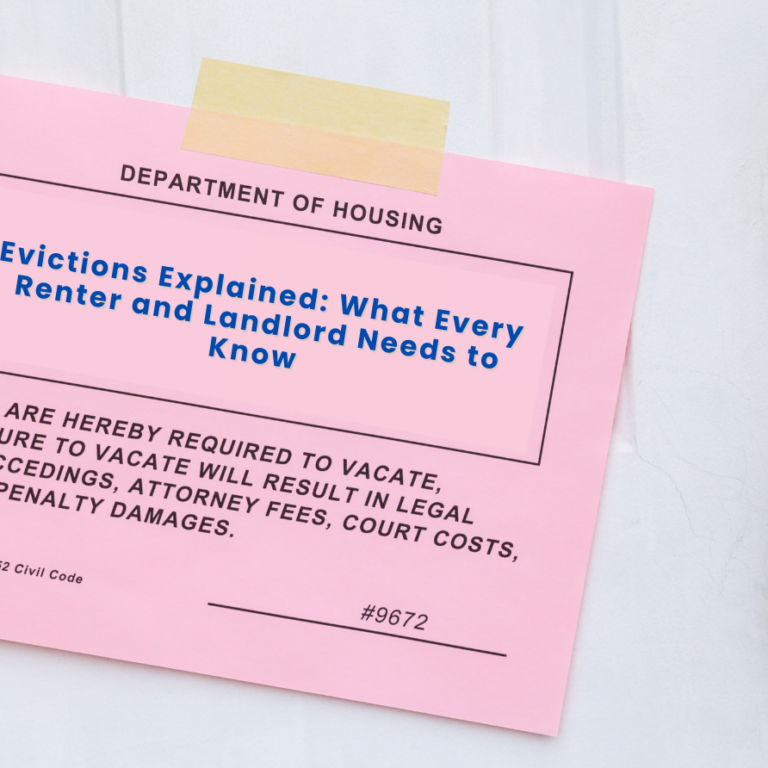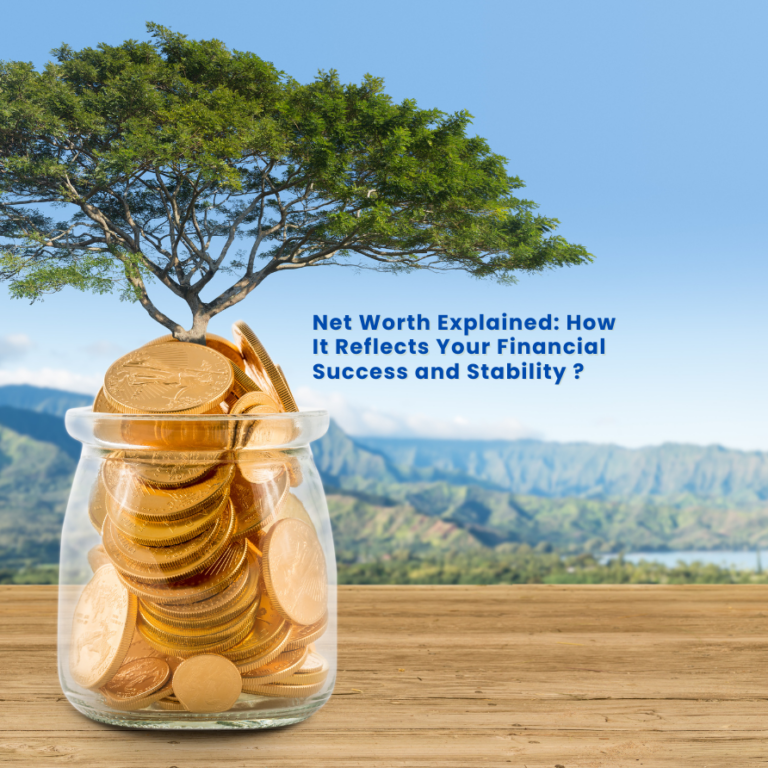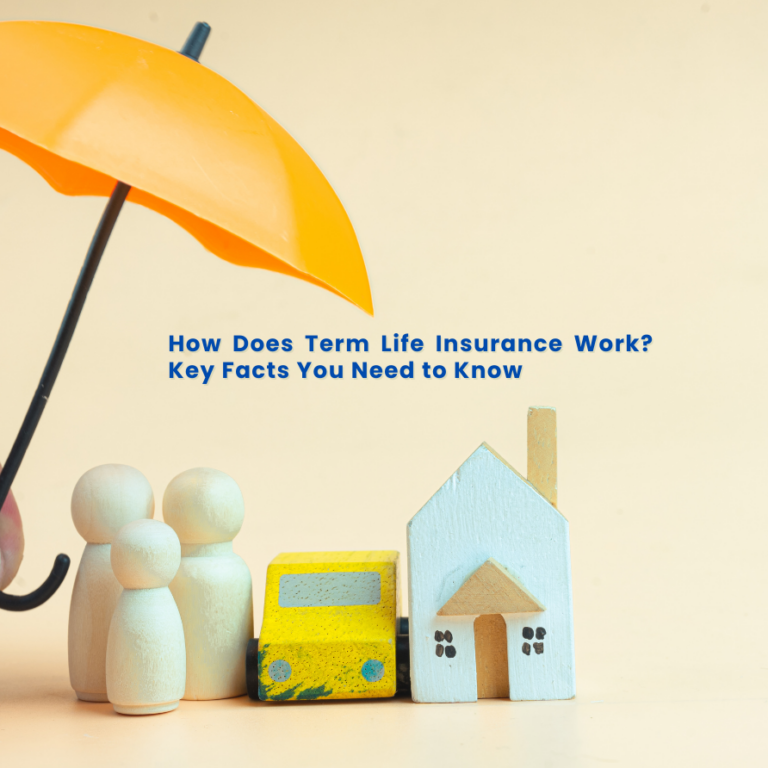Top Rental Investment Strategies for Passive Income and Long-Term Growth
Introduction: Why Rental Investment Is a Smart Wealth-Building Strategy ?
Investing in rental properties is one of the most reliable ways to build long-term wealth. Unlike stocks or other volatile investments, real estate offers tangible benefits that can compound over time. The three pillars of rental investment—passive income , appreciation , and tax benefits —make it an attractive choice for both novice and seasoned investors.
Why Rental Property Stands Out as a Top Long-Term Investment
- Passive Income : Rental Investment properties generate consistent cash flow through monthly rent payments, which can cover expenses and provide extra income.
- Appreciation : Over time, property values tend to increase, allowing investors to build equity without actively managing the asset.
- Tax Benefits : Real estate investors enjoy deductions like mortgage interest, depreciation, and maintenance costs, reducing taxable income.
Rental properties come in various forms, each catering to different markets and strategies. From single-family homes to commercial spaces, understanding the nuances of each type is key to making informed decisions.
What Is a Rental Investment Property?
A rental investment property is any real estate purchased with the intention of earning income through leasing or renting. These properties are not primary residences but rather assets designed to generate returns.
Residential vs. Commercial Rentals
| Factor | Residential Rentals | Commercial Rentals |
|---|---|---|
| Property Types | Single-family homes, duplexes, condos, apartments | Office spaces, retail stores, warehouses, industrial buildings |
| Tenants | Individuals or families | Businesses (B2B leases) |
| Lease Length | Typically 6-12 months | Usually 3-10 years (longer commitments) |
| Rent Payments | Monthly | Often monthly, but some require triple net leases (NNN) where tenants pay taxes, insurance, and maintenance |
| Financing | Easier to qualify (lower down payments, 15-25%) | Tougher (higher down payments, 25-30%+) |
| Management | Tenant issues, repairs, turnover | Less frequent turnover but complex lease agreements |
| Income Stability | Steady but can have vacancies | More stable (long-term leases) but riskier if tenant’s business fails |
| ROI Potential | Moderate (5-10% cash flow) | Higher (8-15%+), but riskier |
| Regulations | Tenant-friendly laws (eviction protections) | More flexible lease terms, fewer restrictions |
| Appreciation | Driven by housing demand | Tied to business growth & location |
Types of Rental Investments
- Long-Term Rentals : Traditional leases lasting 6 months to several years.
- Short-Term Rentals : Properties rented out nightly or weekly via platforms like Airbnb and Vrbo.
- Vacation Rentals : Homes located in tourist destinations rented seasonally.
- Section 8 Rentals : Housing subsidized by the government for low-income tenants.
Each type has unique advantages and challenges, making it essential to align your investment strategy with your goals and risk tolerance.
Short-Term Rental Investment: Pros and Cons
Short-term rentals have surged in popularity thanks to platforms like Airbnb and Vrbo, offering investors the potential for higher earnings and flexibility compared to traditional leases. However, they also come with unique challenges that require careful consideration.
Pros of Short-Term Rentals
✅ High Nightly Rates – Owners can charge premium prices, especially in tourist hotspots, business hubs, or event-driven locations, maximizing income during peak seasons.
✅ Flexibility – Unlike long-term leases, you can block off dates for personal use, making it ideal for vacation homes or secondary properties.
✅ Market Demand – Thrives in cities with strong tourism, corporate travel, or seasonal attractions, ensuring consistent booking opportunities.
✅ Tax Benefits – Many expenses, including cleaning fees, utilities, and management costs, may be tax-deductible.
Cons of Short-Term Rentals
❌ Higher Turnover – Frequent guest changes mean more cleaning, maintenance, and wear-and-tear, increasing operational costs.
❌ Legal Restrictions – Many cities impose strict regulations, zoning laws, or outright bans on short-term rentals—always check local ordinances.
❌ Unpredictable Income – Seasonal demand and economic fluctuations can lead to inconsistent bookings, requiring smart pricing strategies.
❌ Management Intensity – Handling guest communications, last-minute bookings, and emergencies can be time-consuming without automation tools.
Is a Short-Term Rental Right for You?
Short-term rentals work best for:
✔ Investors in high-demand tourist or business destinations
✔ Those comfortable with dynamic pricing and marketing
✔ Tech-savvy owners who can automate operations
Vacation Rental Investment: Is It Worth It?
Buying a vacation home as an investment can be rewarding if strategically planned. These properties are typically located in popular tourist destinations like beaches, ski resorts, or national parks.
Managing Seasonality and Maintenance
- Peak Seasons : Maximize revenue during holidays and summer months.
- Off-Peak Strategies : Offer discounts or host events to attract guests.
- Maintenance : Regular upkeep ensures the property remains appealing and functional.
Tax Rules for Vacation Homes
If you use the property personally for less than 14 days per year, it’s treated as a rental property for tax purposes, allowing deductions for expenses. However, exceeding this threshold may classify it as personal property.
Automation Tools
Platforms like Hospitable and Guesty streamline booking management, while apps like RentRedi simplify communication and payments.
Section 8 Rental Investment: Reliable Income from Government Programs
The Housing Choice Voucher Program (Section 8) is a federally funded initiative that helps low-income families afford housing by subsidizing rent payments. Landlords who participate receive guaranteed, on-time payments directly from the government, reducing financial risk.
Pros & Cons of Section 8 Rentals
| Aspect | Pros ✅ | Cons ❌ |
|---|---|---|
| Payments | Rent paid directly by the government (reliable income) | Payments may be below market rate in some areas |
| Demand | High demand (long waiting lists in most cities) | Strict income limits for tenants |
| Tenant Stability | Longer leases (less turnover) | Eviction process can be slow |
| Inspections | Ensures property maintains quality | Must pass HUD inspections (strict safety standards) |
| Bureaucracy | Reduced risk of non-payment | Paperwork-heavy application process |
| Social Impact | Helps low-income families find housing | Some landlords report higher maintenance costs |
How to Get Started with Section 8 Rentals
- Register with HUD – Complete landlord training in your area.
- Property Approval – Pass HUD’s Housing Quality Standards (HQS) inspection.
- List Your Property – Work with local Public Housing Agencies (PHAs).
- Lease Signing – Tenant’s voucher covers part/all of rent (you collect the rest from them if applicable).
How to Choose the Right Type of Rental Investment
Selecting the best rental investment depends on your financial objectives, lifestyle, and market conditions.
Comparing Rental Types
- Short-Term Rentals : Best for hands-on investors seeking higher returns.
- Long-Term Rentals : Suited for passive investors looking for stability.
- Section 8 Rentals : Ideal for those prioritizing reliability over profit margins.
Investment Goals
- Cash Flow : Focus on properties with positive monthly net income.
- Appreciation : Target emerging markets with growth potential.
- Passive Income : Automate operations with property managers.
Financing Your Rental Investment
Securing funding is a critical step in acquiring rental properties. Several financing options cater to different investor needs.
Loan Types
- Conventional Loans : Standard mortgages requiring 20-25% down payment.
- FHA Loans : Lower down payments but limited to owner-occupied properties.
- DSCR Loans : Debt Service Coverage Ratio loans tailored for rental properties.
Special Considerations
Short-term and vacation rentals often face stricter lending criteria due to perceived risks. Ensure adequate cash reserves to cover vacancies and repairs.
Partnering for Funding
Forming partnerships through LLCs, joint ventures, or syndications can pool resources and reduce individual liability.
Managing Your Rental Property
Effective property management determines the success of your investment. You can either manage it yourself or hire professionals.
DIY Management
- Advantages : Full control and cost savings.
- Challenges : Time-consuming and stressful.
Hiring a Property Manager
- Benefits : Expertise, scalability, and peace of mind.
- Costs : Typically ranges from 8-12% of monthly rent.
Tools and Resources
- Booking Platforms : Hospitable, Guesty, Buildium.
- Tenant Screening : RentRedi, TurboTenant.
- Vendor Networks : Partner with cleaners, handymen, and contractors.
Tax Benefits and Write-Offs
Real estate investing offers numerous tax advantages that enhance profitability.
Common Deductions
- Depreciation : Spread the cost of the property over 27.5 years.
- Mortgage Interest : Deduct interest paid on loans.
- Repairs and Maintenance : Claim costs for fixing structural issues.
- Travel Expenses : Deduct travel related to property management.
Vacation Rental Tax Rules
The 14-Day Rule allows owners using their property personally for fewer than two weeks annually to avoid declaring rental income.
Record Keeping
Maintain meticulous records of all expenses to maximize deductions and comply with IRS requirements.
Real Case Studies: What Success Looks Like
Case Study #1: First-Time Airbnb Investor
Sarah’s journey into real estate investment began when she purchased a condo in an urban area with high tourism demand. Initially, managing her Airbnb property was challenging due to fluctuating occupancy rates and the complexities of guest management. However, Sarah leveraged technology to streamline operations by adopting tools like Guesty, which allowed her to automate booking confirmations, messaging guests, and scheduling cleaning services. This automation significantly reduced her workload and improved efficiency, enabling her to focus on marketing strategies that increased visibility for her listing. Over time, consistent efforts paid off as Sarah optimized pricing strategies based on market trends and seasonal demand.
Her ability to provide excellent hospitality while minimizing operational costs contributed to achieving a 20% annual return on investment (ROI) within two years. This case highlights how first-time investors can overcome initial hurdles through strategic use of technology and dedication to customer satisfaction. It also underscores the importance of choosing properties in locations with strong short-term rental potential.
Case Study #2: Section 8 Property in a Growing City
John recognized the untapped potential of investing in affordable housing by purchasing a duplex in a neighborhood undergoing revitalization. By enrolling his property in the Section 8 program, he secured guaranteed monthly rental income from tenants whose rent is subsidized by the government.
This steady cash flow provided financial stability and eliminated concerns about late payments or vacancies. With predictable revenue, John reinvested profits into acquiring additional properties, expanding his portfolio over time. The Section 8 program not only supported John’s financial goals but also aligned with his desire to contribute positively to underserved communities. His success demonstrates the viability of affordable housing investments, particularly in growing cities where gentrification drives up property values. For investors seeking long-term, low-risk opportunities, participating in government-backed programs like Section 8 offers a reliable pathway to building wealth while addressing critical housing needs.
Case Study #3: Turning a Vacation Cabin Into a Profit Machine
Emily inherited a family cabin nestled in a scenic location and decided to turn it into a profitable vacation rental rather than letting it sit idle. Using Hospitable, a platform designed for optimizing short-term rentals, she maximized bookings by analyzing data such as peak travel seasons and competitor pricing. Emily enhanced her listing with professional photos and engaging descriptions, attracting more guests and increasing occupancy rates. Beyond generating supplemental income, this venture allowed Emily to preserve her family’s legacy property by ensuring its upkeep and continued relevance. She balanced profitability with sentimental value, maintaining the cabin’s charm while making modern upgrades to meet guest expectations.
Emily’s story illustrates how personal assets can be transformed into lucrative businesses without losing their original purpose. It also emphasizes the role of data-driven tools in maximizing returns and preserving cherished spaces for future generations.
Long-Term Rental Investment Strategy
For serious investors, scaling a long-term rental portfolio involves strategic planning.
The BRRRR Method
- Buy : Acquire undervalued properties.
- Rehab : Renovate to increase value.
- Rent : Lease to qualified tenants.
- Refinance : Pull equity to fund new purchases.
- Repeat : Scale the process indefinitely.
Portfolio Scaling
Start small with duplexes and gradually move to multi-unit complexes. Utilize 1031 exchanges to defer capital gains taxes when upgrading properties.
Passive vs. Active Investing
While direct ownership requires active involvement, REITs (Real Estate Investment Trusts) offer a hands-off approach.
Final Thoughts: Which Rental Investment Strategy Is Right for You?
The key to successful rental investment lies in carefully evaluating your personal financial objectives, time availability, and risk appetite. Short-term rental investments through platforms like Airbnb and Vrbo can generate impressive returns but require significant hands-on management – ideal for investors who enjoy active property oversight and operate in high-tourism markets. Traditional long-term rental investments offer more stable, passive income streams with lower maintenance requirements, making them particularly suitable for first-time investors or those seeking reliable cash flow. Section 8 rental investments provide guaranteed government-subsidized payments and consistent occupancy, though they involve more regulatory compliance. Vacation rental investments allow for personal property use while creating income potential, but require strategies to manage seasonal demand fluctuations.
When selecting your rental investment approach, conduct thorough market research to understand local demand dynamics across different property types. Carefully calculate all potential expenses including vacancies, maintenance costs, and financing charges to ensure realistic return projections. Assess your willingness to handle day-to-day management tasks versus hiring professional help. Many successful rental investors begin with one strategy that matches their current resources and gradually diversify their portfolio as they gain experience. The most profitable rental investment is ultimately the one that aligns with both your financial targets and lifestyle preferences, while being properly executed in a supportive market environment.
FAQS
1. What is the best type of rental investment for beginners?
Long-term rentals are typically the best choice for beginners because they offer stable cash flow, lower turnover, and simpler management compared to short-term rentals. Section 8 properties can also be a good option if you want government-backed rent payments.
2. How much money do I need to start a rental investment?
The amount varies, but here’s a general breakdown:
- Down payment: 15-25% for residential, 25-30%+ for commercial
- Closing costs: 2-5% of the purchase price
- Emergency fund: At least 3-6 months of expenses
Some investors start with house hacking (living in one unit while renting others) to reduce initial costs.
3. Are short-term rentals (Airbnb) more profitable than long-term rentals?
Short-term rentals can generate higher returns in tourist-heavy markets, but they require:
✔ More management (cleaning, guest communication)
✔ Marketing efforts (professional photos, pricing tools)
✔ Compliance with local laws (some cities restrict Airbnb)
Long-term rentals offer lower but more consistent income with less effort.
4. What are the biggest risks of rental property investing?
- Vacancy risk (no tenants = no income)
- Bad tenants (late payments, property damage)
- Unexpected repairs (roof leaks, HVAC failures)
- Market downturns (declining property values)
Mitigate risks by:
✔ Screening tenants carefully
✔ Maintaining a cash reserve
✔ Choosing locations with strong rental demand
5. How do I finance a rental property investment?
Common financing options include:
- Conventional loans (20-25% down)
- FHA loans (3.5% down if owner-occupied)
- DSCR loans (based on rental income potential)
- Private/hard money lenders (for fix-and-flip investors)






